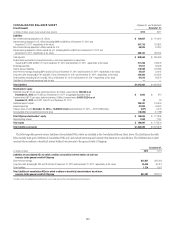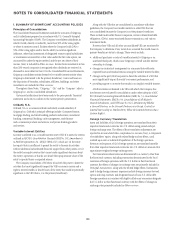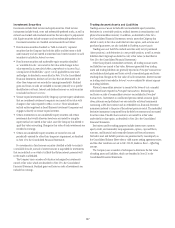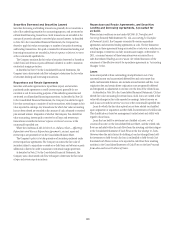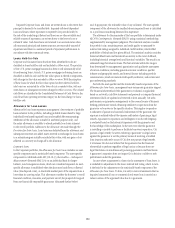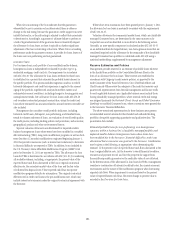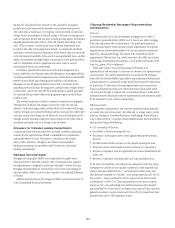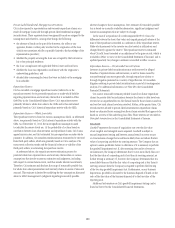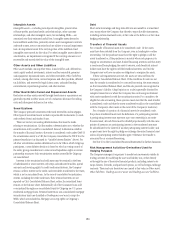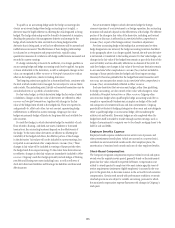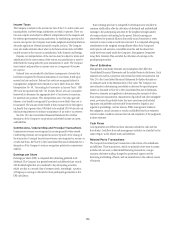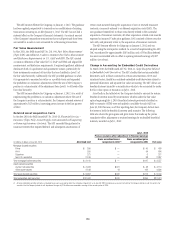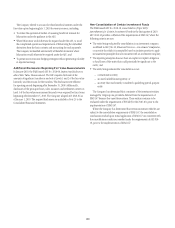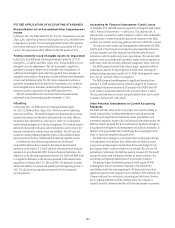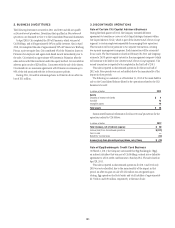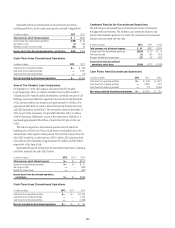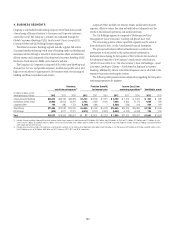Citibank 2012 Annual Report Download - page 175
Download and view the complete annual report
Please find page 175 of the 2012 Citibank annual report below. You can navigate through the pages in the report by either clicking on the pages listed below, or by using the keyword search tool below to find specific information within the annual report.153
Private-Label Residential Mortgage Securitizations
Citi is also exposed to representation and warranty repurchase claims as a
result of mortgage loans sold through private-label residential mortgage
securitizations. These representations were generally made or assigned to the
issuing trust and related to, among other things, the following:
• the absence of fraud on the part of the borrower, the seller or any
appraiser, broker or other party involved in the origination of the loan
(which was sometimes wholly or partially limited to the knowledge of the
representation provider);
• whether the property securing the loan was occupied by the borrower as
his or her principal residence;
• the loan’s compliance with applicable federal, state and local laws;
• whether the loan was originated in conformity with the originator’s
underwriting guidelines; and
• detailed data concerning the loans that were included on the mortgage
loan schedule.
Repurchase Reserve
Citi has recorded a mortgage repurchase reserve (referred to as the
repurchase reserve) for its potential repurchase or make-whole liability
regarding representation and warranty claims that is included in Other
liabilities in the Consolidated Balance Sheet. Citi’s repurchase reserve
primarily relates to whole loan sales to the GSEs and is thus calculated
primarily based on Citi’s historical repurchase activity with the GSEs.
Repurchase Reserve—Whole Loan Sales
The repurchase reserve is based on various assumptions which, as referenced
above, are primarily based on Citi’s historical repurchase activity with the
GSEs. As of December 31, 2012, the most significant assumptions used
to calculate the reserve levels are: (i) the probability of a claim based on
correlation between loan characteristics and repurchase claims; (ii) claims
appeal success rates; and (iii) estimated loss per repurchase or make-whole
payment. In addition, Citi considers reimbursements estimated to be received
from third-party sellers, which are generally based on Citi’s analysis of its
most recent collection trends and the financial solvency or viability of the
third-party sellers, in estimating its repurchase reserve.
As referenced above, the repurchase reserve estimation process for
potential whole loan representation and warranty claims relies on various
assumptions that involve numerous estimates and judgments, including
with respect to certain future events, and thus entails inherent uncertainty.
Therefore, Citi estimates and discloses the range of reasonably possible loss
for whole loan sale representation and warranty claims in excess of amounts
accrued. This estimate is derived by modifying the key assumptions discussed
above to reflect management’s judgment regarding reasonably possible
adverse changes to those assumptions. Citi’s estimate of reasonably possible
loss is based on currently available information, significant judgment and
numerous assumptions that are subject to change.
In the case of a repurchase of a credit-impaired SOP 03-3 loan, the
difference between the loan’s fair value and unpaid principal balance at the
time of the repurchase is recorded as a utilization of the repurchase reserve.
Make-whole payments to the investor are also treated as utilizations and
charged directly against the reserve. The repurchase reserve is estimated
when Citi sells loans (recorded as an adjustment to the gain on sale, which is
included in Other revenue in the Consolidated Statement of Income) and is
updated quarterly. Any change in estimate is recorded in Other revenue.
Repurchase Reserve—Private-Label Securitizations
Investors in private-label securitizations may seek recovery for alleged
breaches of representations and warranties, as well as losses caused by
non-performing loans more generally, through repurchase claims or
through litigation premised on a variety of legal theories. Citi considers
litigation relating to private-label securitizations as part of its contingencies
analysis. For additional information, see Note 28 to the Consolidated
Financial Statements.
Citi cannot reasonably estimate probable losses from future repurchase
claims for private-label securitizations because the claims to date have been
received at an unpredictable rate, the factual basis for those claims is unclear,
and very few such claims have been resolved. Rather, at the present time, Citi
records reserves related to private-label securitizations repurchase claims
based on estimated losses arising from those claims received that appear to be
based on a review of the underlying loan files. These reserves are recorded in
Principal transactions in the Consolidated Statement of Income.
Goodwill
Goodwill represents the excess of acquisition cost over the fair value
of net tangible and intangible assets acquired. Goodwill is subject to
annual impairment testing and between annual tests if an event occurs
or circumstances change that would more-likely-than-not reduce the fair
value of a reporting unit below its carrying amount. The Company has an
option to assess qualitative factors to determine if it is necessary to perform
the goodwill impairment test. If, after assessing the totality of events or
circumstances, the Company determines that it is not more-likely-than-not
that the fair value of a reporting unit is less than its carrying amount, no
further testing is necessary. If, however, the Company determines that it is
more-likely-than-not that the fair value of a reporting unit is less than its
carrying amount, then the Company is required to perform the first step
of the two-step goodwill impairment test. Furthermore, on any business
dispositions, goodwill is allocated to the business disposed of based on the
ratio of the fair value of the business disposed of to the fair value of the
reporting unit.
Additional information on Citi’s goodwill impairment testing can be
found in Note 18 to the Consolidated Financial Statements.


